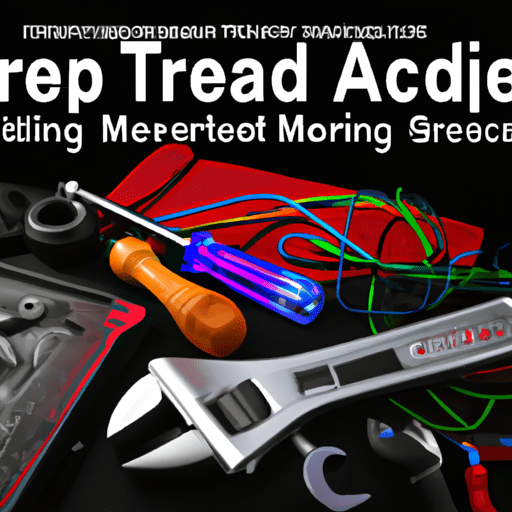When it comes to engine repair, traditional troubleshooting approaches can be a tedious and time-consuming process. Mechanics often resort to trial and error methods to pinpoint the root cause of engine problems. However, advanced diagnostic tools have emerged as a game-changer for engine repair professionals. These tools are designed to streamline the engine diagnosis process and help mechanics save time and money. This article explores some of the best advanced diagnostic tools that can help you rev up your engine repair game.
1. OBD-II Scanners
On-board diagnostic (OBD) scanners are arguably the most essential diagnostic tools for any mechanic. They are designed to diagnose issues in the engine control unit (ECU) and other onboard systems of a vehicle. OBD-II scanners are the latest iteration of this tool and provide advanced diagnostic features. They can read and clear codes, display live data, monitor sensors, and perform various other diagnostics tasks. Furthermore, OBD-II scanners are compatible with most vehicle models, making them an indispensable tool for any mechanic.
2. Digital Oscilloscopes
Digital oscilloscopes are advanced diagnostic tools that allow mechanics to analyze various electrical signals in an engine. They provide real-time feedback on voltage, current, and resistance levels, indicating potential issues with electronic components in the engine. Oscilloscopes can also be used to test sensors, fuel injectors, and ignition coils. Additionally, they can be used to detect intermittent problems that would otherwise go unnoticed.
3. Smoke Machines
Smoke machines are a relatively new addition to the engine diagnostic toolkit. They are designed to identify leaks in the engine and exhaust system. The machine produces a neutral-colored smoke that is then fed into the vehicle’s intake system. If there is a leak in the engine or exhaust system, the smoke will be visible, and the mechanic can easily locate the source of the leak. Smoke machines are particularly useful for diagnosing vacuum leaks, which can be difficult to detect using other diagnostic methods.
4. Thermal Imaging Cameras
Thermal imaging cameras are another advanced diagnostic tool that has gained popularity among engine repair professionals. They are used to identify issues related to the engine’s cooling system, such as overheating or loss of coolant. Thermal cameras detect temperature variations in the engine’s components, highlighting potential issues that would otherwise be difficult to spot. Mechanics can use these cameras to check for hotspots in the engine block, radiator, or other components that may indicate a problem with the cooling system.
5. Fuel Pressure Testers
Fuel pressure testers are essential diagnostic tools that help mechanics identify issues related to fuel delivery. They are used to measure the fuel pressure in the fuel lines and can be used to locate fuel-related issues such as clogged fuel filters, low fuel pressure, or faulty fuel pumps. Fuel pressure testers can also be used to test the fuel injectors to ensure that they are delivering fuel to the engine properly.
6. Battery Testers
A weak or dead battery can cause a variety of problems in the engine, including difficulties in starting the vehicle. Battery testers are designed to check the battery’s voltage, capacity, and other parameters. They are particularly useful for identifying weak batteries and can be used to determine if the battery needs to be replaced.
7. Compression Testers
Compression testers are used to measure the engine’s compression levels. They are designed to be attached to the engine’s cylinder to measure the pressure created when the engine turns over. Compression testers can be used to identify issues related to valve seals, piston rings, or other components that may affect the engine’s performance. Furthermore, compression testers can be used to determine the overall health of an engine and its potential lifespan.
Conclusion
Advanced diagnostic tools have revolutionized the engine repair profession. They have streamlined the diagnostic process, making it easier and faster to identify issues and fix them. These tools help mechanics save time and money by reducing the need for trial and error troubleshooting methods. By incorporating these advanced diagnostic tools into their repair toolkit, mechanics can improve the quality of their services and provide a better experience for their customers. Whether you are a seasoned professional or just starting in the field, investing in these advanced diagnostic tools can give you a competitive edge and help you rev up your engine repair game.


